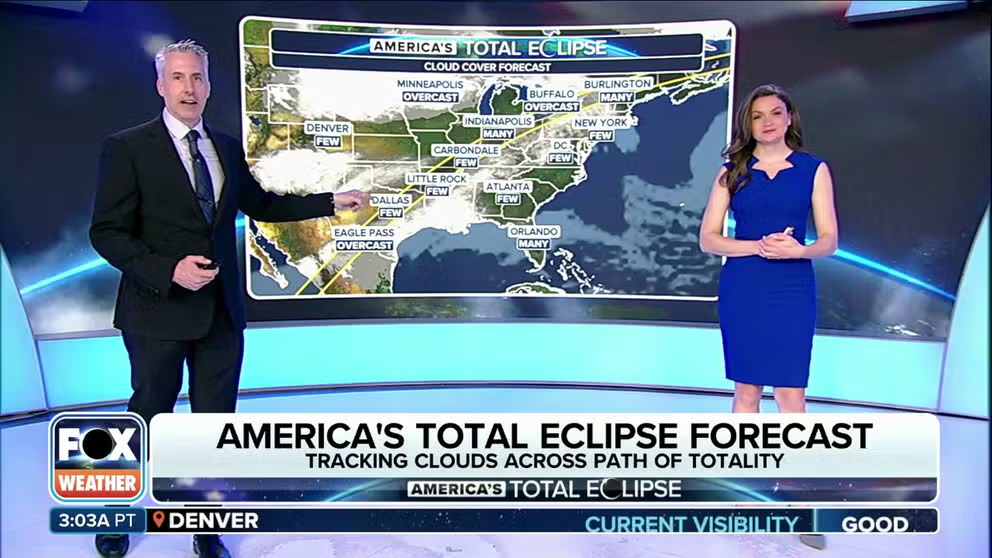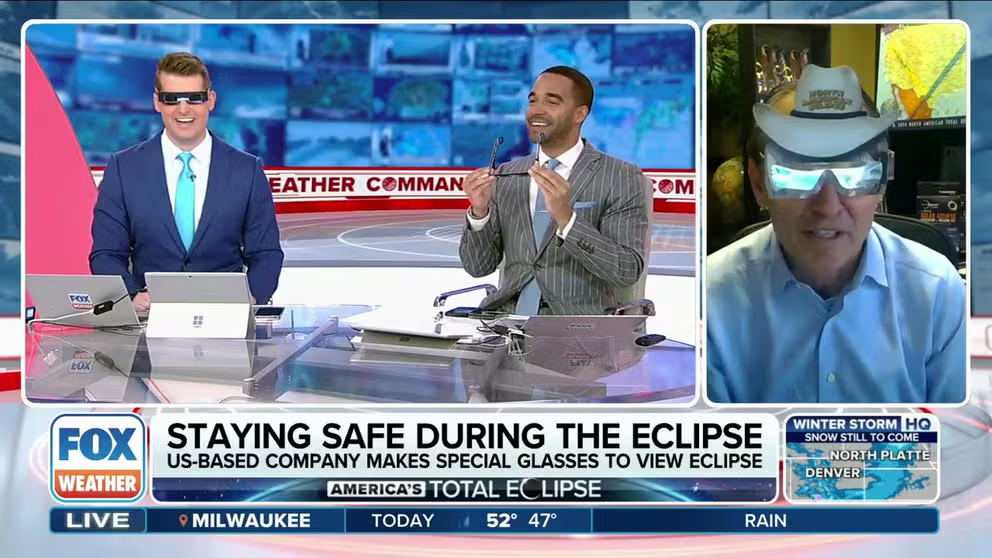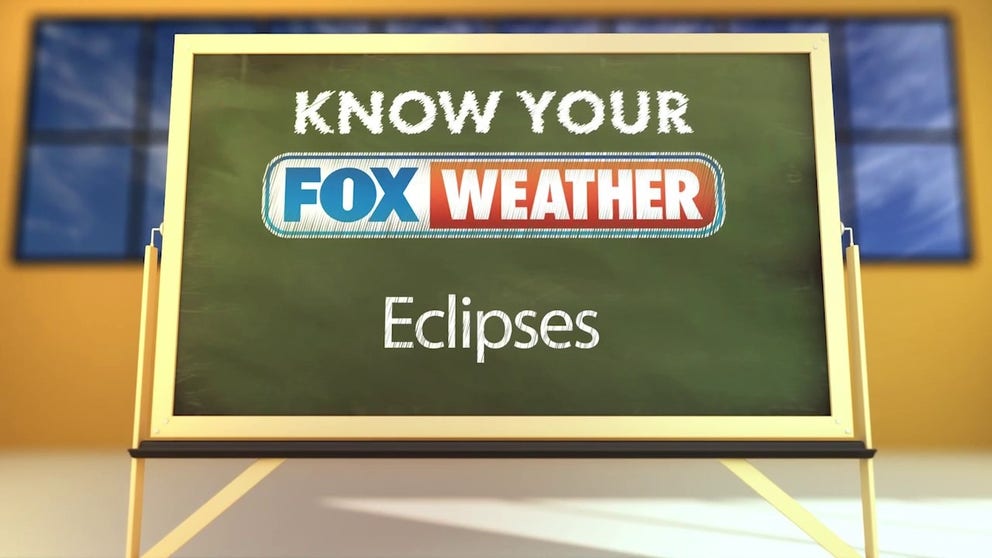What to know about the total solar eclipse happening today
From solar glasses to the cloud-cover forecast, here is everything you need to know about the April 8 total solar eclipse happing across the U.S.
Total solar eclipse forecast shows where clouds could interfere with viewing on Monday
America's Total Eclipse is happening today. Here's the latest outlook from the FOX Forecast Center showing which regions of the U.S. will have the best viewing conditions and which areas might have to contend with cloud cover.
The April total solar eclipse is here, and those lucky enough to be along the path of totality are just hours away from witnessing a rare astronomical wonder.
To help eclipse watchers prepare for the big event, here is everything you need to know about the Great American Eclipse on April 8.
Where is the total eclipse happening?
The total solar eclipse will be visible Monday in parts of Mexico, Canada and the U.S. In the U.S., 14 states will be along the path of totality, including Texas, Oklahoma, Arkansas, Tennessee, Illinois, Kentucky, Indiana, Missouri, Ohio, Pennsylvania, New York, Vermont, New Hampshire and Maine.
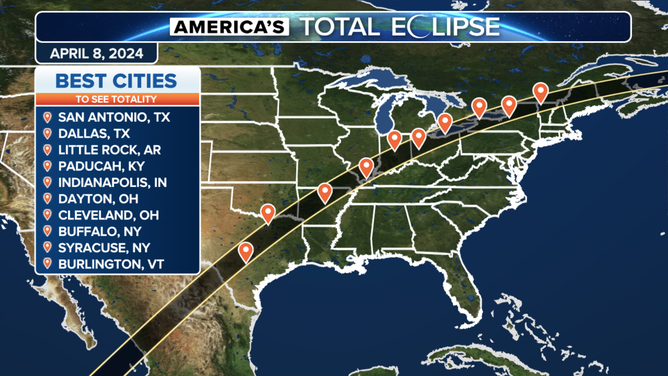
A map showing cities along the 2024 eclipse path of totality.
(FOX Weather)
WHO WILL BE ABLE TO SEE THE APRIL 2024 TOTAL SOLAR ECLIPSE?
For some in southeastern Missouri, western Kentucky and southern Illinois, this will be their second total solar eclipse in seven years since they were also along the path of totality in 2017.
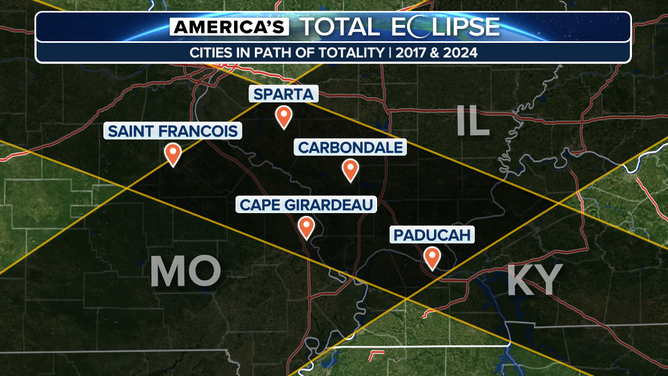
A map showing the cities in the path of totality in 2017 and 2024.
(FOX Weather)
What time is the total eclipse?
According to NASA, the total solar eclipse will begin over the South Pacific Ocean. The first spot in North America to experience totality will be Mexico's Pacific Coast around 11:07 a.m. PDT.
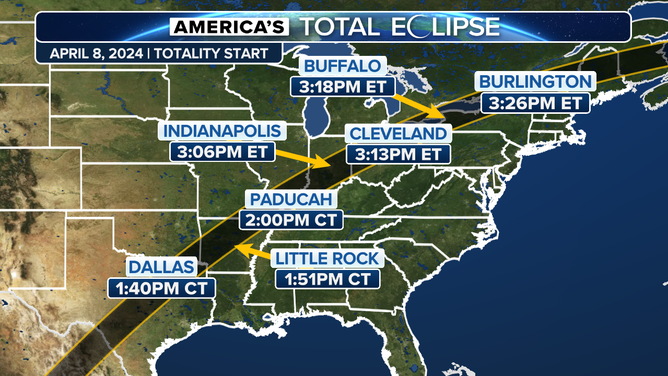
A map of the total solar eclipse path and totality start times across some U.S. cities.
(FOX Weather)
What time the solar eclipse happens for you depends on where you are along the path of totality.
For example, the following cities will experience the beginning of totality at the listed times:
- Dallas at 1:40 p.m. CDT.
- Little Rock at 1:51 p.m. CDT.
- Carbondale, Kentucky, at 1:59 p.m. CDT.
- Cleveland at 3:13 p.m. EDT.
- Buffalo, New York, at 3:18 p.m. EDT.
- Caribou, Maine, at 3:32 p.m. EDT.
Who will see a partial solar eclipse?
While only the 100-mile-wide path of totality will experience a total solar eclipse, many more across the U.S. will see at least a partial solar eclipse on April 8.
The color-coded map below shows the eclipse coverage across America with the path of totality in yellow. Cities including Houston, Nashville, Chicago and Columbus will see a 90-99% eclipse. Philadelphia and New York City will experience nearly 90% coverage of the Sun.
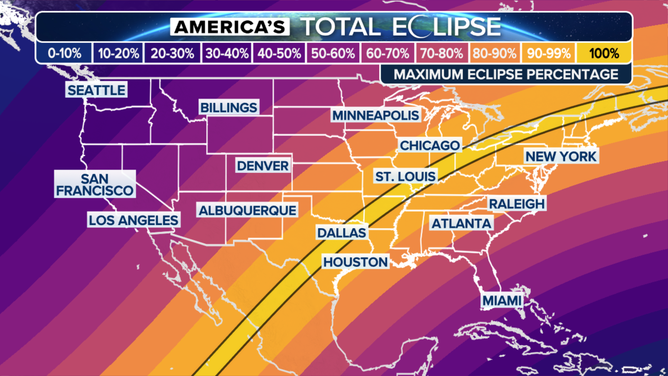
April 8, 2024 eclipse path visibility. The yellow path represents the path of totality.
(FOX Weather)
Remember to keep your solar glasses on at all times during a partial eclipse.
How to safely watch the eclipse
To safely view the 2024 total solar eclipse, you'll need glasses with solar filters, sometimes known as eclipse glasses or solar glasses.
Eclipse glasses needed to protect your eyes during total solar eclipse
With the April 8 total solar eclipse approaching American Paper Optics CEO John Jerit explains how solar eclipse glasses are made.
When the Sun is covered completely, known as totality, it is safe to remove your eclipse glasses. This is when the Sun is covered by the Moon. The glasses must go back on before the partial eclipse resumes and part of the Sun is visible again.
Removing your glasses only applies if you are located along the path of totality in 2024. Most of the U.S. will see a partial solar eclipse, but only a 115-mile-wide path will see a total eclipse.
Read on here to find out where to get your eclipse glasses and what to know before you view a solar eclipse.
Total solar eclipse cloud-cover forecast
The FOX Forecast Center has put together the cloud cover forecast shown on the map below, showing areas predicted to have an overcast sky, many clouds or few clouds during the eclipse.
As of Monday morning, the forecasts are showing the best viewing conditions in parts of New England and the Midwest, while clouds might obscure the view of the eclipse in portions of Texas and the interior Northeast.
This map will continue to be updated right up until the eclipse on Monday afternoon.

(FOX Weather)
Click here for a list of forecast maps across the path of totality.
It's also important to note that even if it's cloudy, you will likely still see at least some of the eclipse.
What to expect during the eclipse
Know Your FOX Weather: Eclipses
FOX Weather meteorologist Stephen Morgan breaks down the difference between Lunar and Solar eclipses.
For most, a total solar eclipse is a once-in-a-lifetime experience. If you've never experienced this astronomical rarity, it can be surprising how quickly the environment around you changes from day to dusk during totality.
You can recognize different phases of the eclipse, including the crescent of a partial eclipse, Baily's Beads, the diamond ring and, of course, totality.

CHESTER, IL - AUGUST 21: The end of the eclipse is indicated by the diamond ring effect during a total eclipse of the sun on August 21, 2017, as viewed from the Cohen Recreation Center in Chester, IL.
(Photo by Keith Gillett/Icon Sportswire via Getty Images / Getty Images)
During totality, the temperature can drop between 15 and 20 degrees. It will become as dark as sunset, but this happens gradually.
Wildlife and insects also experience the changes and can react as though the sun has just set. Birds might become silent, and crickets can begin chirping. A NASA citizen science experiment is studying some of these wildlife reactions during this year's eclipse.
No matter where you see it, you won't want to miss the 2024 North American eclipse. The next one in the continental U.S. doesn't happen until August 2044.
